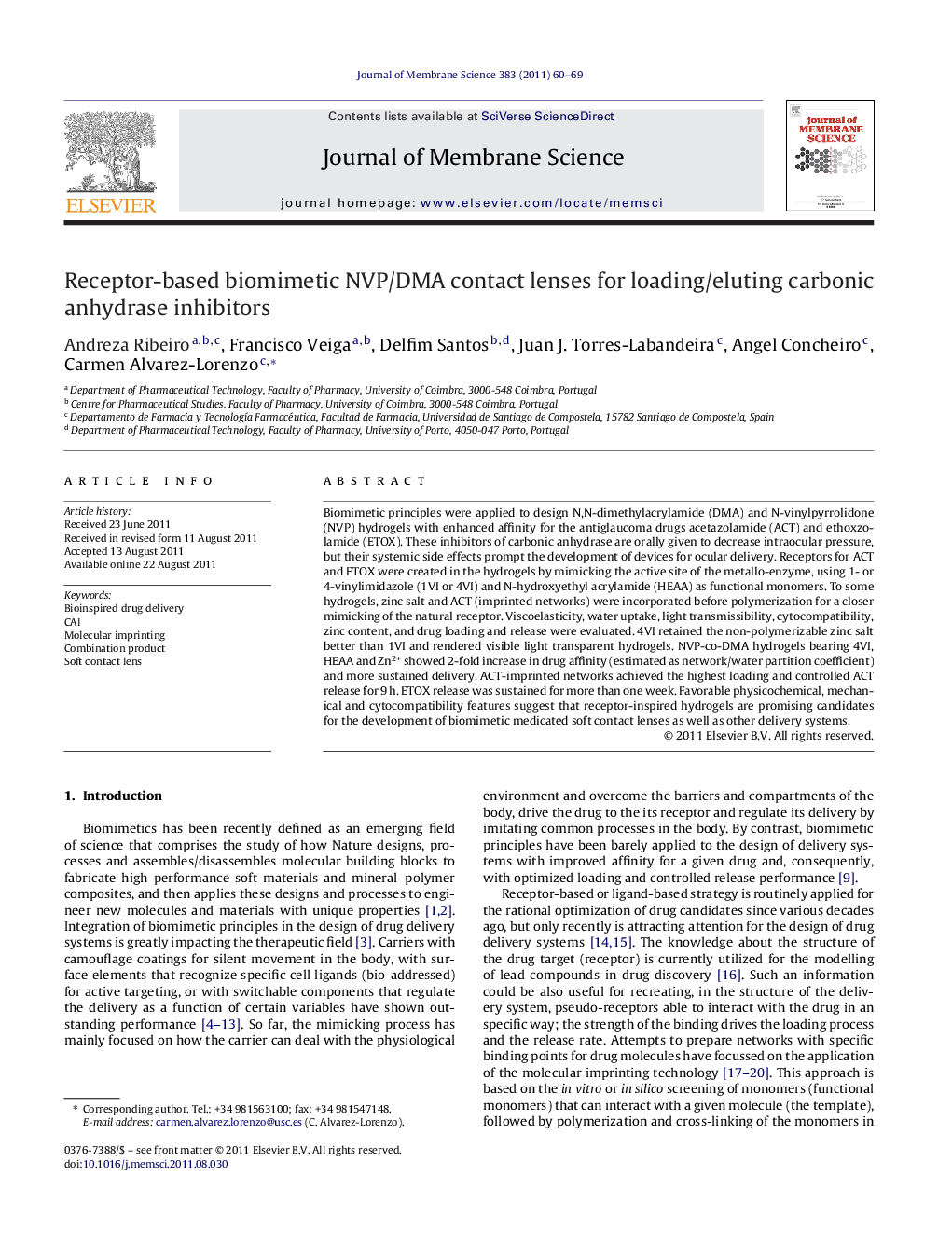| کد مقاله | کد نشریه | سال انتشار | مقاله انگلیسی | نسخه تمام متن |
|---|---|---|---|---|
| 635415 | 1456096 | 2011 | 10 صفحه PDF | دانلود رایگان |

Biomimetic principles were applied to design N,N-dimethylacrylamide (DMA) and N-vinylpyrrolidone (NVP) hydrogels with enhanced affinity for the antiglaucoma drugs acetazolamide (ACT) and ethoxzolamide (ETOX). These inhibitors of carbonic anhydrase are orally given to decrease intraocular pressure, but their systemic side effects prompt the development of devices for ocular delivery. Receptors for ACT and ETOX were created in the hydrogels by mimicking the active site of the metallo-enzyme, using 1- or 4-vinylimidazole (1VI or 4VI) and N-hydroxyethyl acrylamide (HEAA) as functional monomers. To some hydrogels, zinc salt and ACT (imprinted networks) were incorporated before polymerization for a closer mimicking of the natural receptor. Viscoelasticity, water uptake, light transmissibility, cytocompatibility, zinc content, and drug loading and release were evaluated. 4VI retained the non-polymerizable zinc salt better than 1VI and rendered visible light transparent hydrogels. NVP-co-DMA hydrogels bearing 4VI, HEAA and Zn2+ showed 2-fold increase in drug affinity (estimated as network/water partition coefficient) and more sustained delivery. ACT-imprinted networks achieved the highest loading and controlled ACT release for 9 h. ETOX release was sustained for more than one week. Favorable physicochemical, mechanical and cytocompatibility features suggest that receptor-inspired hydrogels are promising candidates for the development of biomimetic medicated soft contact lenses as well as other delivery systems.
Figure optionsDownload high-quality image (200 K)Download as PowerPoint slideHighlights
► Biomimetic design of network with affinity for drugs.
► Nature-inspired synthesis of soft contact lenses for drug delivery.
► Mimicking the active site of the metallo-enzyme carbonic anhydrase in a polymeric network.
► Enhanced network/water partition coefficient of drugs.
► Optically transparent and biocompatible hydrogels for controlled release.
Journal: Journal of Membrane Science - Volume 383, Issues 1–2, 1 November 2011, Pages 60–69